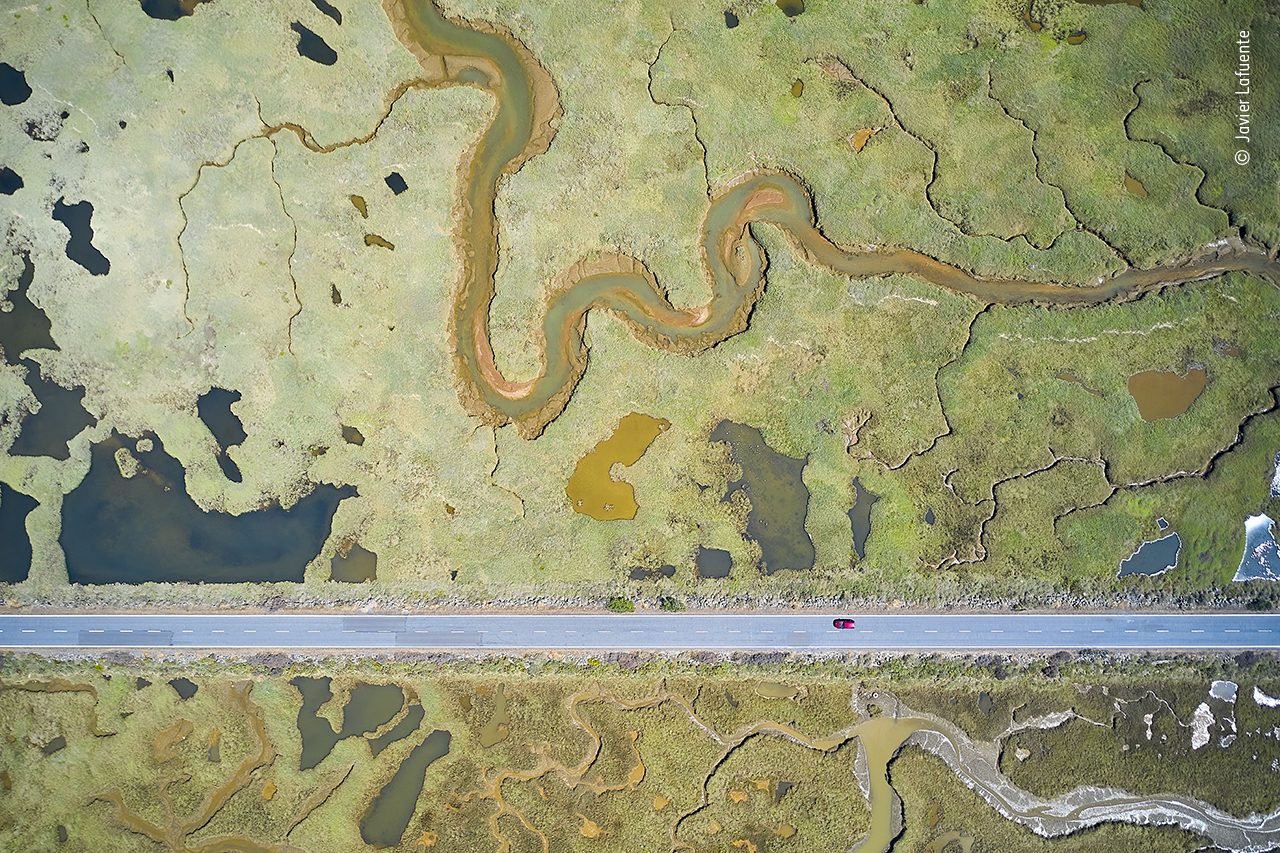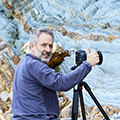Visit the exhibition
Discover the incredible stories of life on our planet through powerful photography and expert insight.
Tickets on sale now.

Javier illustrates the disregard we show for the natural world with his aerial shot of an artificially straight tarmac road slicing through this wetland landscape.
The Odiel Marshes, a UNESCO Biosphere Reserve, are the second largest wetland in southern Spain and the country's most important tidal wetland. The area where the mouths of the Odiel and Tinto rivers meet is home to more than a hundred species of birds including flamingos, spoonbills, hoopoes and black-winged stilts, with ospreys and bee-eaters among many migratory visitors.
The road was constructed in the 1980s and is mostly used to provide access to a beach. It divides the wetland reserve in two and has altered the drainage of the tidal marshes and lagoons while disturbing the wildlife that lives there.
Wetland ecosystems are important carbon sinks, and the fragmentation and destruction of these landscapes around the world is greatly reducing our ability to fight climate breakdown.
Coastal wetlands also act as an important buffer zone to protect human populations from storm surges and wave and wind power. As our climate becomes less and less stable, we will need this protection even more.
How you can help
Discover the incredible stories of life on our planet through powerful photography and expert insight.
Tickets on sale now.

Spain
Javier is an amateur nature photographer from Spain. His passion for wildlife - going to the countryside and trying to capture what he saw and felt - led him to nature photography. He still enjoys documentary photography, but now he also brings a more personal and creative approach to nature. Most of his photographic work, both documentary and creative, is done in his native country.
Help us harness the power of photography to advance scientific knowledge, spread awareness of important issues and nurture a global love for nature.